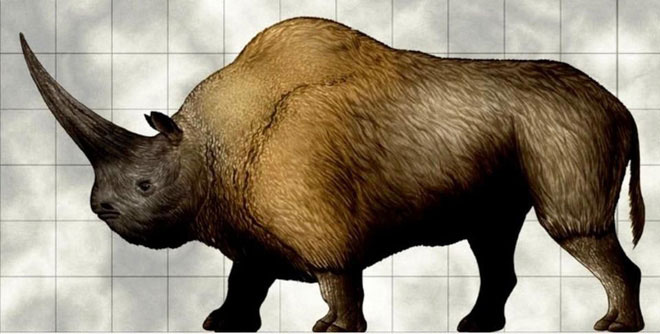Siberian Unicorns are extinct due to climate change, not by humans
For a long time, scientists have argued about what has forced Siberian unicorns to extinction, human or climate.
Weighing approximately 3.5 tons and probably owning the largest horn of any species of large animal family, the Elasmotherium sibiricum - better known as the "wild" than - once heroic walking on the surface of the Earth. But besides the "rhino-like" appearance, we don't know much about big animals.
At least just last November. With the paper published in Nature Ecology & Evolution, we had the first DNA analysis of the Unicorn, with DNA from fossils preserved from tens of thousands of years ago.

The extinct Siberian unicorn species from 39,000 years ago.
Led by Pavel Kosintsev, a palaeontologist at the Russian Academy of Sciences, the team of researchers has concluded the extinct Siberian unicorn from 39,000 years ago means people modern and Neanderthals have walked on the Eurasian Continent next to the giant animal. Previous studies have shown that the extinct rhinoceros 200,000 years ago has been completely removed.
Many large animals coexist with modern humans who have become extinct by hunting, including mammoth elephants or giant sloths, but Kosintsev and his colleagues argue that human ancestors were not inspired. Very interesting with the rhino.The main reason why the Siberian Unicorn is extinct is.
"It is likely that human presence is not the reason for the massive rhinos to be extinct," said study co-author Chris Turney, a climate researcher at the University of New South Wales. " It seems that the Siberian unicorn is heavily influenced by the climate of the early Ice Age . In Eurasian continent, the temperature dropped extremely deep, causing the ground to freeze, withered grasses that made animals belong a large area has seriously reduced ".
Affirming " extinction from 200,000 years ago" shook for the first time in 2016, when scientists found the skull of Elasmotherium sibiricum in Kazakhstan, dating to only 29,000 years old. However, the scientific community denies this finding, suggesting that the collagen component in the skull has made the dating of carbon dating wrong.
Kosintsev decided to back up new evidence with another series of studies. They conducted the dating of 23 other Siberian Unicorns, with DNA samples from six individuals, opposite the data on the giant rhino's habitat.
Chronology of fossil samples falls between 39,000 and 50,000 years, when modern humans appeared in Eurasia. This time also coincided with the genocide event at the end of the Quaternary, when the global climate changed markedly. According to reports, about 40% of mammals weighing more than 45 kg live in Eurasian continents are killed after this time.

It seems that Siberian unicorn is heavily influenced by the climate of the early Ice Age.
For a long time, scientists have argued about what forces the organisms to live up to the point of extinction, being human or climate.
To accurately determine the impact of climate change on Siberian unicorns, the researchers analyzed isotopes of rhino teeth fossils, recreated the food source it had chewed and found that the This plant specializes in eating plants in the grasslands of Southeast Europe and Siberia."Easy" herbivores that eat a variety of plants will survive the climate change period. The grass-eating Siberian unicorn died slowly due to lack of food.
There is still a certain proportion of people who contribute to the giant rhino to the brink of extinction, even though we still have evidence of our "innocence" : the paintings on the walls do not mention mentioning Ky. Siberian unicorns, and also did not find this rhino bone in human habitats at the time of the extinct unicorn.
There is only one thing for sure: our ancestors have witnessed the disappearance of one of the most beautiful and miraculous creatures ever walking on the Earth.
- The DNA of the mysterious Siberian unicorn species was first analyzed
- We have not found aliens because climate change makes them extinct?
- 2500 species of birds may become extinct because of climate change
- Mammals extinct due to the effects of climate change and humans
- 4 shocking findings on climate change
- Reveal the true cause of the mammoth extinction
- 10 most dangerous animals on the planet
- It turns out that the unicorn in the legend is real but it is terrible
- Coffee plants are about to become extinct due to climate change
- The discovery of insects sheds light on climate change
- The first animal was extinct because of climate change
- This is how Dubai copes with climate change
 Discovered an ancient centipede fossil 99 million years old
Discovered an ancient centipede fossil 99 million years old Discovered bat-like dinosaurs in China
Discovered bat-like dinosaurs in China Discovered a 200-year-old bronze cannon of the coast
Discovered a 200-year-old bronze cannon of the coast Discover 305 million-year-old spider fossils
Discover 305 million-year-old spider fossils